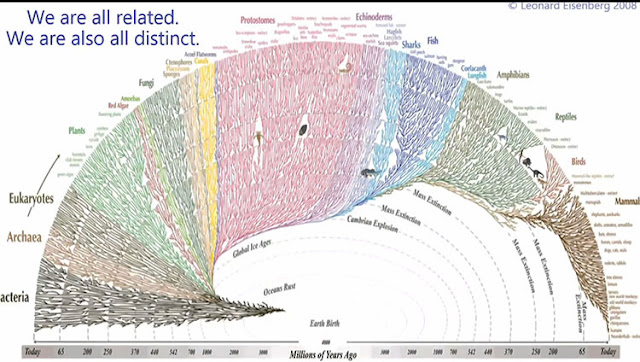Greetings from Palmia Observatory
Well we just got back from our really fun ZERO-G flight and while we wait to get the photos back from that experience, which we will show in the next post, we can comment about an interesting book and the successful launch of the Lucy spacecraft.
Physicist wannabes look at physical principles to understand the nature of stars and galaxies and how they came about and what their evolutionary history was and what will happen in the future. The same interest occurs when we consider our human nature and how we became who we are today. This book "A Hunter-Gatherer's Guide to the 21st Century" by Heather Heying and Bret Weinstein is a new book that looks at the issues that we modern humans face today, in our culture that evolves very quickly, and yet we still have much the same brains that evolved to help our hunter-gatherers ancestors survive 30,000 years ago or maybe even a million years ago.
The book describes how our genetic programming determines what capabilities we have to develop culture and culture enables us to adapt more quickly to changing environmental conditions than could our ancestors who lived in a slowly changing environment. Evolution in our genetics occurs very slowly but our capability to develop culture and learn can happen more quickly. But are now faced with an environment that changes so quickly that it is not clear how we will be able to keep up? You just have to look at how fast technology is changing our world and recognize that being old and experienced in one age and one environment might not be as useful as being able to change and adapt and learn about the new environment. Anyway check it out if you are interested in type of stuff.
 |
| Hunter-Gatherer's Guide to the 21st Century (Source: Heather Heying and Bret Weinstein) |
In doing some separate homework regarding the evolutionary history of life on Earth, this slide from a presentation by Heather Heying, is very interesting. It shows the history as a circle, with the origin representing the very first beginnings of life on Earth. Then a you come forward in time, the radius of the circle gets larger and you can trace the evolutionary history. So one interesting thing we see right away is that the very first organisms, like Bacteria and Archaea, are still with us today. You can also see how previous mass extinctions took out a big portion of living beings, but the old and ancient classes like bacteria just keep on going along.
 |
| Circular diagram showing evolutionary history of life on Earth (Source: L. Eisenberg, 2009) |
In other space news, the Lucy spacecraft successfully blasted off from KSC on October 16. Lucy will travel in an orbit that takes it passed two groups of Trojan asteroids. This journey is significant scientifically because the Trojans are supposed to contain remnants from the early history and formation of the solar system.
 |
| Lucy spacecraft blasts off on Atlas 5 rocket on October 16 (Source: NASA) |
One good YouTube source of information about the Lucy Mission is found in this presentation by Cathy Olkin, Lucy Deputy Principal Investigator.
 |
| NASA's Lucy Mission (Source: Cathy Olkin, https://youtu.be/NPEVJy3e5rQ) |
Lucy depends on solar power and it takes some large solar cell arrays to collect enough power at Jupiter's distance from the sun.
 |
| Lucy with large solar panels for operation at 5 AU (Source: Cathy Olkin, https://youtu.be/NPEVJy3e5rQ) |
Cathy went on to explain that the orbit of Lucy enables it to visit the Trojans at L4 and then travel passed the Earth again and continue on to visit the Trojans at L5. Pretty wild and neat!
 |
| The orbit of Lucy travels to Trojan asteroids as found along Jupiter's orbit at L4 & L5 (Source: NASA) |
It is instructive to recall the locations of the other Lagrange points. These points occur for the Earth too, not just Jupiter, and their are the same gravitationally stable points around Earth's orbit about the sun. The JWST will be placed near L2 for the Earth-Sun system. Interestingly, JWST will not be exactly at L2, but in reality orbit around L2. In this image, the Lagrange points are shown in green, the sun is yellow and the planet is shown in purple. For the Trojan asteroids case, both groups of asteroids at L4 and L5, just follow along on the orbital path as Jupiter revolves about the sun.
 |
| Lagrange Points (Source: Wikipedia) |
Finally, let's end on a fanciful notion forward to us by Gravity Guy and part-time Las Vegan, Ken, who found this artists impression of what might be lurking at a Lagrange point. It could happen that defunct spacecrafts that had run out of fuel or other junk can be found in gravitationally stables locations like Lagrange points? Thanks for the image, Ken! Maybe we will find a few Federation cruisers and Borg cubes?
 |
| Some artist's impression of what we might find in a Lagrange point (Source: unknown artist) |
Until next time,

No comments:
Post a Comment